Dodge Journey: Installation
2.4L
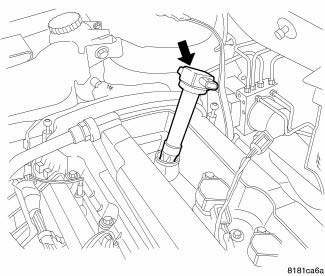
Fig. 17: Removing/Installing Ignition Coil
1. Install ignition coil onto spark plug.
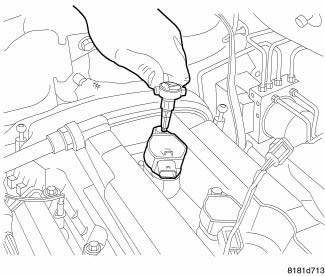
Fig. 18: Removing/Installing Ignition Coil Mounting Bolts
2. Install ignition coil mounting bolt, tighten to 9 N.m (79.5 in. lbs.).
3. Connect ignition coil electrical connectors.
4. Connect negative battery cable, tighten nut to 5 N.m (45 in. lbs.).
5. Install engine cover.
2.7L
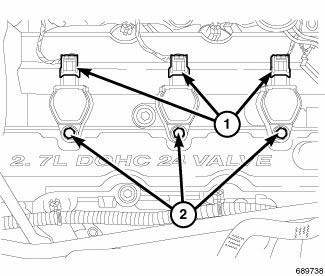
Fig. 19: Removing/Installing Electrical Connectors And Mounting Bolts At
Ignition Coil
1. Align ignition coil with top of spark plug.
2. Twist and push down ignition coil assembly onto spark plug and valve cover. Install mounting bolt (2) and tighten to 7.5 N.m (65 in. lbs.).
3. Connect electrical connector (1) to ignition coil.
4. Install upper intake manifold.
5. Connect negative battery cable.
3.5L
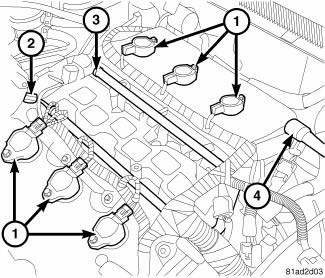
Fig. 20: Ignition Coils And Fuel Rail
1. Install ignition coil (1).
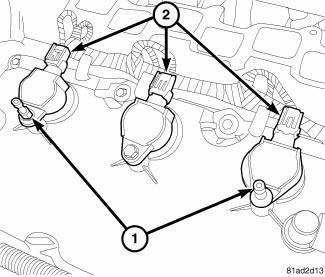
Fig. 21: Ignition Coils
2. Install engine cover studs (1) in the two outside ignition coils on the front of the engine. Install bolts on the other ignition coils.
3. Tighten studs and bolts to 8 N.m (71 in. lbs.).
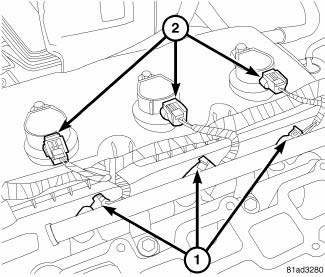
Fig. 22: Identifying Coil & Fuel Injector Connectors
4. Connect electrical connector and lock (2).
5. Install intake manifold.
6. Connect negative battery cable and tighten nut to 5 N.m (45 in. lbs.).
7. Install engine cover.
 Removal
Removal
2.4L
Fig. 11: Identifying Ignition Coil Electrical Connectors
NOTE: Prior to removing coil, spray compressed air around coil top to
make sure no
dirt drops into the spark plug tube.
The ...
 Module, glow plug
Module, glow plug
DESCRIPTION
Fig. 23: Locating Diesel Glow Plug Control Module
The glow plug control module is mounted to the fuel filter/water separator
bracket, and is controlled by the
engine control module. ...
See also:
Module, power, rear blower motor
DESCRIPTION
Fig. 59: Rear Blower Power Module Description
A blower motor power module is used on this model when equipped with the
automatic temperature control
(ATC) rear heating-A/C system. M ...
REMOTE STARTING SYSTEM — IF EQUIPPED
This system uses the Remote Keyless Entry (RKE) transmitter
to start the engine conveniently from outside the
vehicle while still maintaining security. The system has a
range of approximately 300 f ...
Motor, headlamp leveling, export
DESCRIPTION
Fig. 37: Headlamp Leveling Motor
The headlamp leveling motor (1) is located on the rear surface of each front
lamp unit on vehicles equipped
with the headlamp leveling system, which ...
